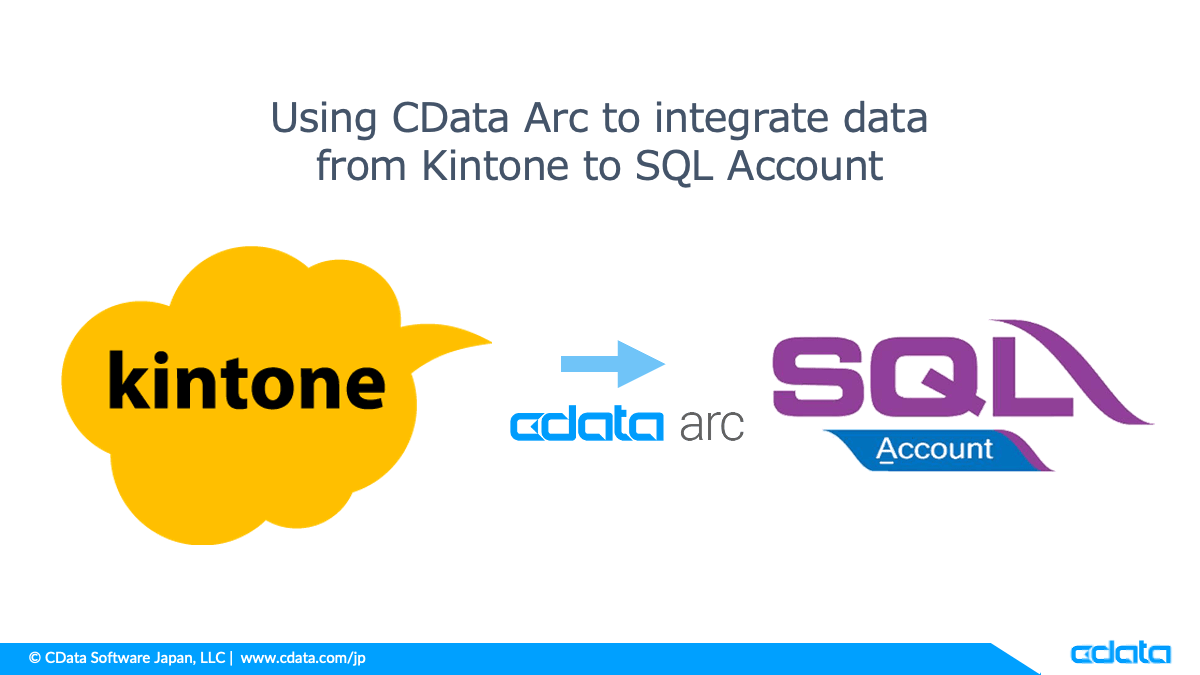Discover how a bimodal integration strategy can address the major data management challenges facing your organization today.
Get the Report →CData Software - Knowledge Base
Latest Articles
- Replicate Data from Multiple Files in an Amazon S3 Bucket Using CData Sync
- Replicate Data from Multiple Local Files Using CData Sync
- Driver Guide: Marketing Analytics Predefined Reports
- Displaying Data from Related Tables Using Angular with Connect Server
- Deploying CData Sync in a Kubernetes Environment
- Excel Add-In Getting Started Guide
Latest KB Entries
- Jetty Security Notice Overview
- Upsert Salesforce Data Using External Id in SSIS
- NuGet Repository Overview
- SAP Drivers Overview
- Embedded Web Server (.NET) - Potential Medium Security Vulnerability
- Configuring Incremental Replication in CData Sync
ODBC Drivers
- [ article ] SQL Gateway Overview
- [ article ] A Comparison of the CData and Sun JDBC-ODBC ...
- [ article ] Author and Share Power BI Reports on Live Google ...
- [ article ] Video: Connecting to Google BigQuery Data from ...
JDBC Drivers
- [ article ] A Comparison of JDBC & ODBC Drivers for Amazon ...
- [ article ] A Comparison of Database Drivers for SQL Server
- [ article ] A Performance Comparison of Drivers for ...
- [ article ] Access QuickBooks from Aqua Data Studio
SSIS Components
- [ article ] Standards-Based Access to NoSQL Data Sources
- [ kb ] Upsert Salesforce Data Using External Id in SSIS
- [ article ] A Performance Comparison of Drivers for ...
- [ article ] How to connect Salesforce to SQL Server with SSIS
ADO.NET Providers
- [ article ] Generating an Entity Data Model in Visual Studio ...
- [ article ] Configuring the CData Query Federation Driver
- [ article ] Connect to Dynamics NAV with the CData OData ...
- [ article ] Connect QuickBooks to SQL Server through SSIS
BizTalk Adapters
- [ article ] Configuring a Receive Location for the CData ...
- [ article ] How to Execute Stored Procedures with the CData ...
- [ article ] Standards-Based Access to NoSQL Data Sources
- [ article ] Tutorial: Create and Process Updategrams with the ...
Excel Add-Ins
- [ kb ] Connect/Disconnect the QuickBooks Online Products
- [ article ] Video: Connecting to Google BigQuery Data from ...
- [ kb ] Excel Add-In: Retrieving Custom Reports Using ...
- [ article ] Start and Stop Windows Services Using the CData ...
API Server
- [ article ] Easily Build Angular2 Database Apps
- [ article ] Host the API Server on Azure
- [ article ] Launch the CData Connect Azure Virtual Machine
- [ article ] Editing API Driver API Profiles
Data Sync
- [ article ] Configuring Clustering for CData Sync
- [ kb ] Configuring Incremental Replication in CData Sync
- [ article ] Replicate Data from Multiple Local Files Using ...
- [ article ] Start with CData Sync Part 3: Creating a ...
Windows PowerShell
- [ article ] Query Google Calendars, Contacts, and Documents ...
- [ article ] Import QuickBooks Online Data to QuickBooks ...
- [ article ] Reconciling Authorize.net Transactions with ...
- [ article ] PowerShell Cmdlets Getting Started Guide






